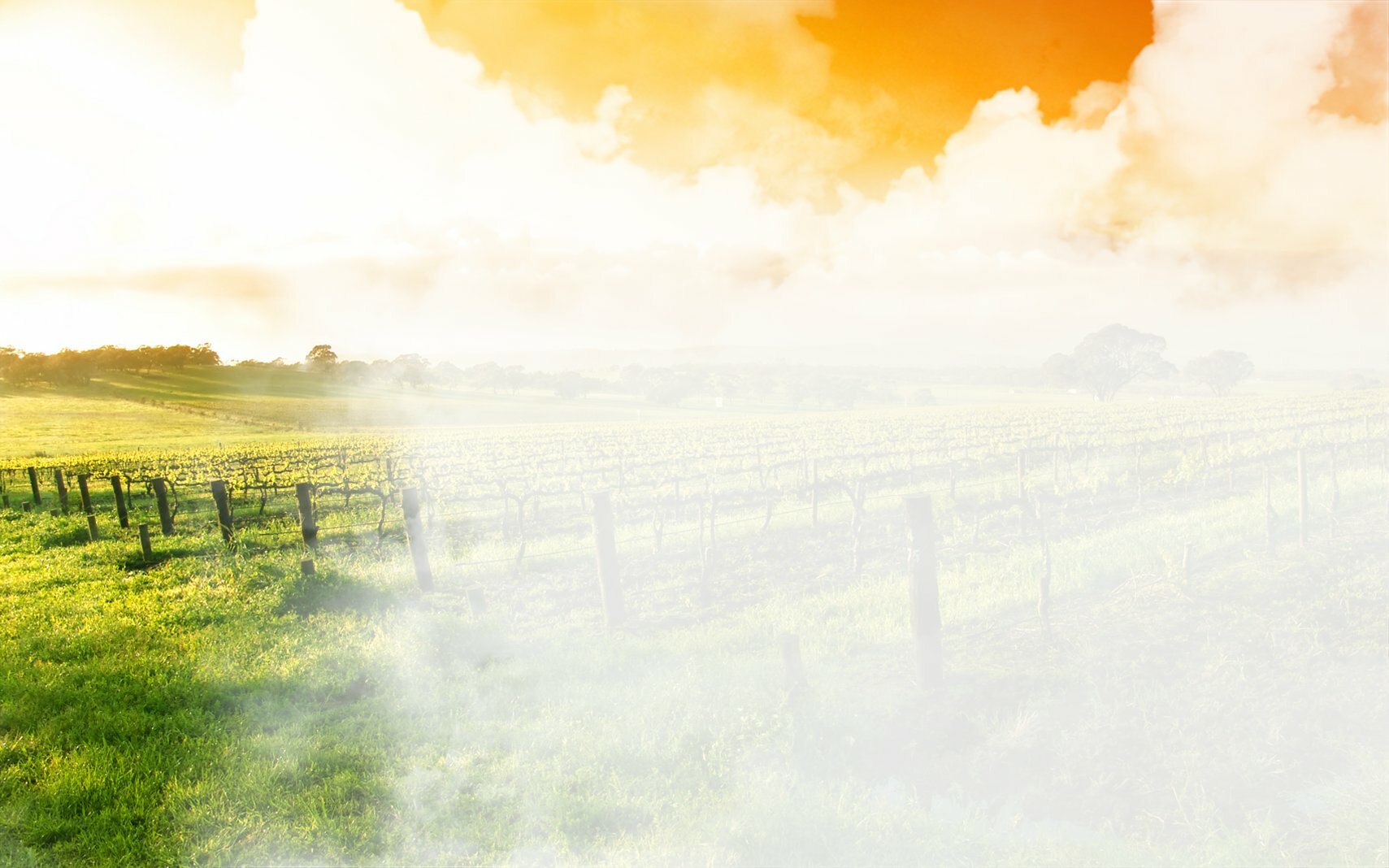FAIRTRADE MONITORING REPORT 2011-2012
22.01.2013 - Fairtrade International has published its monitoring report for the season 2011-2012. The report, titled "Monitoring the Scope and Benefits of Fairtrade 2012", highlights important Fairtrade data and shows how Fairtrade is growing steadily in both producing and consuming countries. For the first time, it also captures the results of recent research studies containing evidence about the longer-term impacts of Fairtrade.The monitoring data are drawn from audit reports undertaken between March 2011 and February 2012, and covers 990 of the 991 producer organisations that were certified at the end of 2011, thus nearly 100% of all certified producers. This is the most complete batch of monitoring data collected to date and gives a more comprehensive picture of the status of Fairtrade than the two preceding monitoring reports.
Below is a summary of the reports key findings. You can download the full report here [5Mb].
GROWTH IN THE NUMBER OF FARMERS AND WORKERS
In last year's monitoring report we reported a total of 1,1 million farmers and workers in the Fairtrade system. In 2011, at the time of compilation of this report, there were 1,24 million - a 13% increase.

Within each region the patterns of growth have been slightly different. In Africa and the Middle East there was strong growth, particularly in Western Africa due to ongoing growth in the number of certified cocoa producer organisations, and in Eastern Africa, due to the increase in sugar cane certifications.
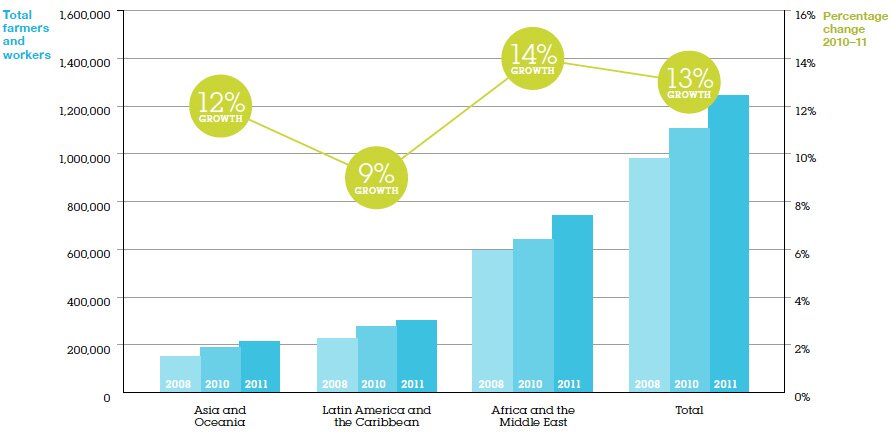
NUMBER OF FARMERS AND WORKERS
Globally, there are 1,24 million small-scale farmers and farm workers that participate in Fairtrade farming and that directly benefit from Fairtrade. If we count the indirect beneficiaries (e.g. families), we can approximate that Fairtrade benefits over 5 million people worldwide.
60% of which are located in Africa and Middle East. Jointly, Africa and the Middle East hosts over 663,000 Fairtrade small-scale farmers and 69,200 farm workers working on Fairtrade certified farms.
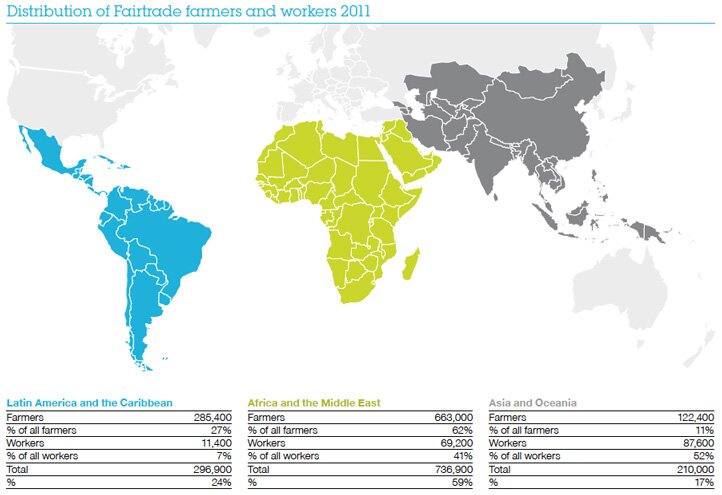
In terms of number of Fairtrade farmers, Tanzania, Kenya and Ethiopia are the top 3 countries. This is mainly due to the large Fairtrade coffee and tea cooperatives located in Eastern Africa. If we look at the number of farm workers, India, Kenya and Sri Lanka score the highest as a result of the expansive employment in the Fairtrade tea and cotton sectors. South African Fairtrade farms hire over 9,200 people, mostly on fruit and wine grape farms.
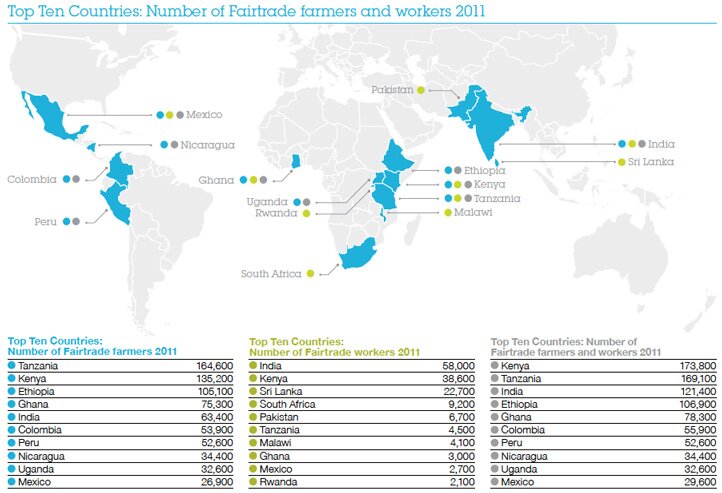
The majority of Fairtrade farmers and farm workers are involved in the farming of the 6 Fairtrade core-products: coffee, tea, cocoa, cotton, sugar and bananas. Almost half of them work in the production of Fairtrade coffee!
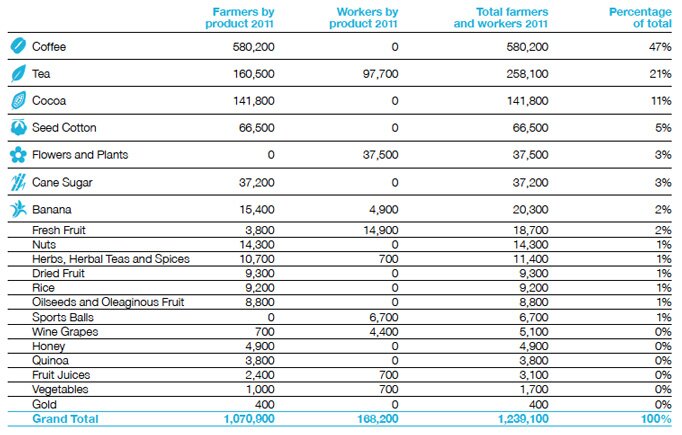
FAIRTRADE SALES
Coffee is also one of the most sold Fairtrade products, together with sugar (which doubled its sales from the previous season), cocoa, and tea. A decrease in sales has been noted in minor products such as honey, dried fruit and nuts (which usually serve as ingredients), and in seed cotton. This is possibly due to the high costs involved in certifying cotton supply chains, which are far more global and complex than other commodities.
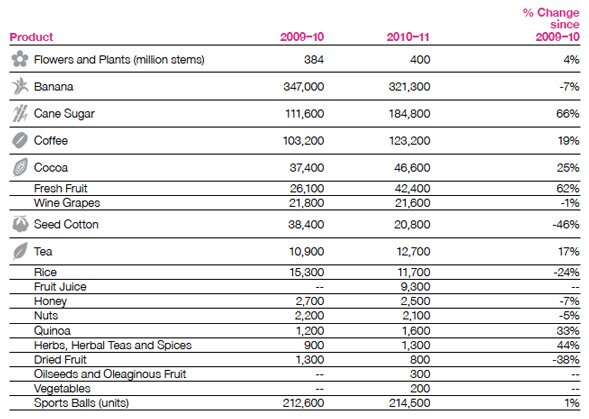
FAIRTRADE DEVELOPMENT PREMIUM
In the last season, Fairtrade producer organisations reported receiving a total of €61,1 million in Fairtrade Development Premium - a 19% increase on the figure reported last year. Most of the premium was generated by Central and South American producers, who are large Fairtrade coffee, cocoa and banana producers (3 of the core Fairtrade products).
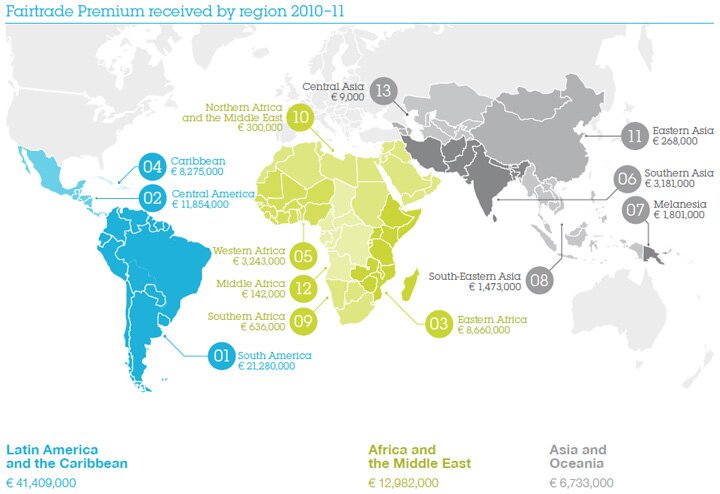
The Fairtrade Development Premium is intended to be a flexible support that farmers and workers use to meet their specific needs and those of their communities. As explained in our Fairtrade Standards section, small-scale farmers typically use the premium to improve their businesses, whereas farm workers invest more in social development projects. This is reflected by the tables below:
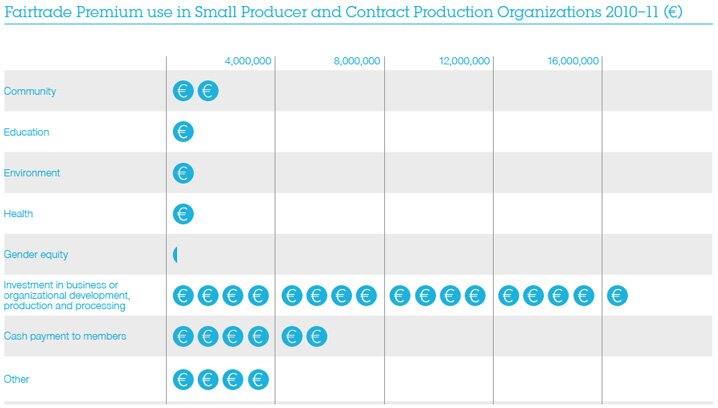
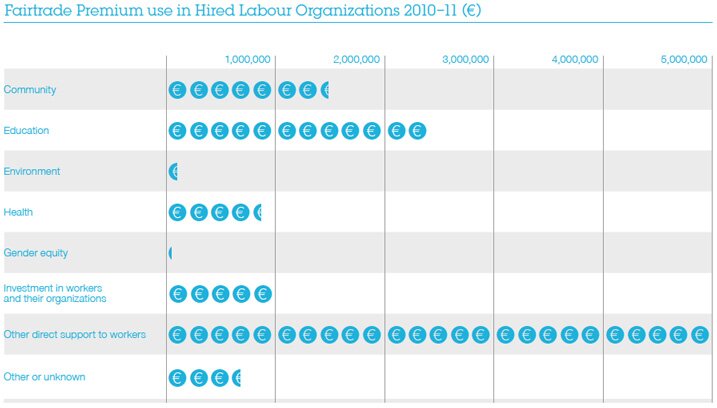
NB: In the table above, "Other direct support to workers" include child care, provision of loans and credits, and improvement of workers' housing.
--
For more research on Fairtrade, visit our Facts & Figures and Research & Literature pages. You can also visit out Producer page to read some case studies on how Fairtrade is having a positive impact in the lives of farmers and farm workers.
